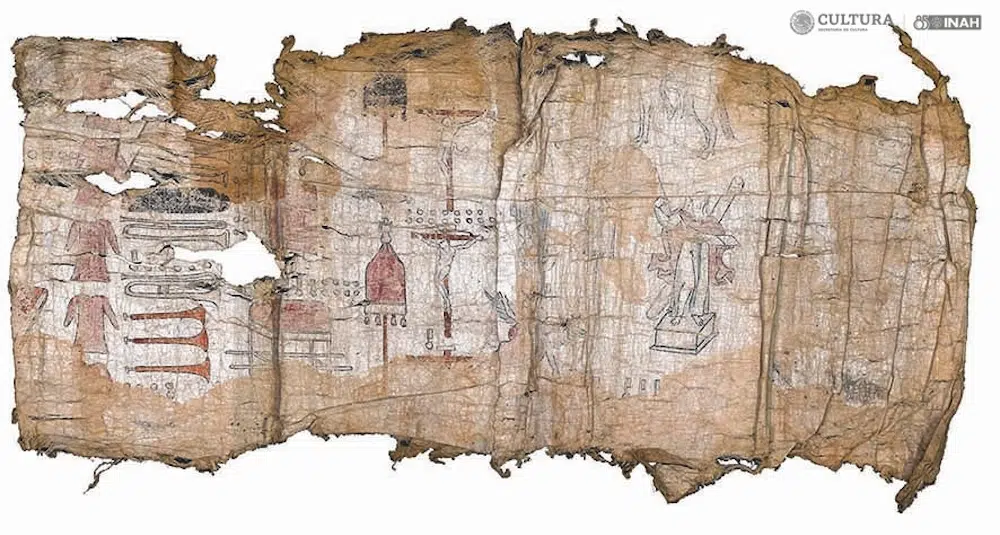
According to Mexico’s National Institute of Anthropology and History (INAH), a set of ancient books from Mexico have revealed a wealth of information on the Aztecs. These books are written in the Aztec language and tell us about how their capital was built, their victories, and how they were defeated by the Spanish.
Based on a report by the Spanish newspaper El País, the Mexican government just purchased three special books called codices. They are known as the Codices of San Andrés Tetepilco. These books are filled with drawings and have been kept by a family for many years.
During the 15th and 16th centuries, the Aztecs were in charge of a big part of Mexico. Their main city was Tenochtitlán, located where Mexico City stands today. Between 1519 and 1521, Spanish invaders took over the Aztec Empire, making it part of Spain’s territory.
Even after that, books written in the Aztec language, Nahuatl, and Spanish were still being made until the early 17th century, as reported by Live Science.
Tenochtitlán founded approximately in 1300
INAH representatives explained that there were recently talks on one of the codices, specifically about how Tenochtitlan was founded approximately in 1300. The leaders who governed it before the Spanish arrived were also a topic of discussion.
According to the codex, the Aztecs took over Tetepilco around 1440, and the ruler of Tetepilco pledged loyalty to the Aztecs. Furthermore, the codex also describes the Spanish arrival in 1519, their authority until 1611, and their maintaining control over Mexico until 1821.
A family in Mexico City, who preferred not to be named, owned the particular codices. Researchers at the Metropolitan Autonomous University in Mexico City studied these and discovered that two of the pages were made of amate, a type of bark paper.
They also found that the inks used in the codices were made from plants, charcoal, and indigo, which resulted in colors such as red, yellow ochre, black, and blue.
Government bought all the codices for $570,000
Once the authenticity of the documents was confirmed, the government started negotiations with the family. Eventually, the government bought all three codices for 9.5 million pesos, which is about $570,000.
El País mentioned that the family also sold two other codices. One of them is about how Tetepilco was founded, while the other describes the belongings of a church there.
Now, all three codices are part of the National Library of Anthropology and History’s Collection of Mexican Codices (BNAH). Researchers are excited to look deeper into these texts to uncover more about Mexico’s past, as stated by INAH.
UNAM researchers clarified that the map of the founding of Tetepilco holds valuable historical and geographical data. It includes records that match real locations, such as Culhuacan, Tetepilco, Tepanohuayan, Cohuatlinchan, Xaltocan, and Azcapotzalco.
See all the latest news from Greece and the world at Greekreporter.com. Contact our newsroom to report an update or send your story, photos and videos. Follow GR on Google News and subscribe here to our daily email!



